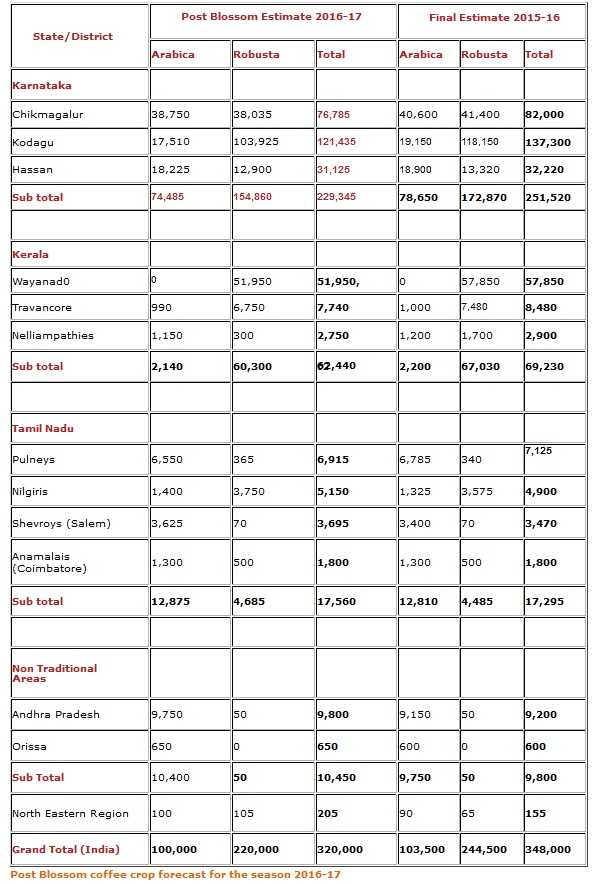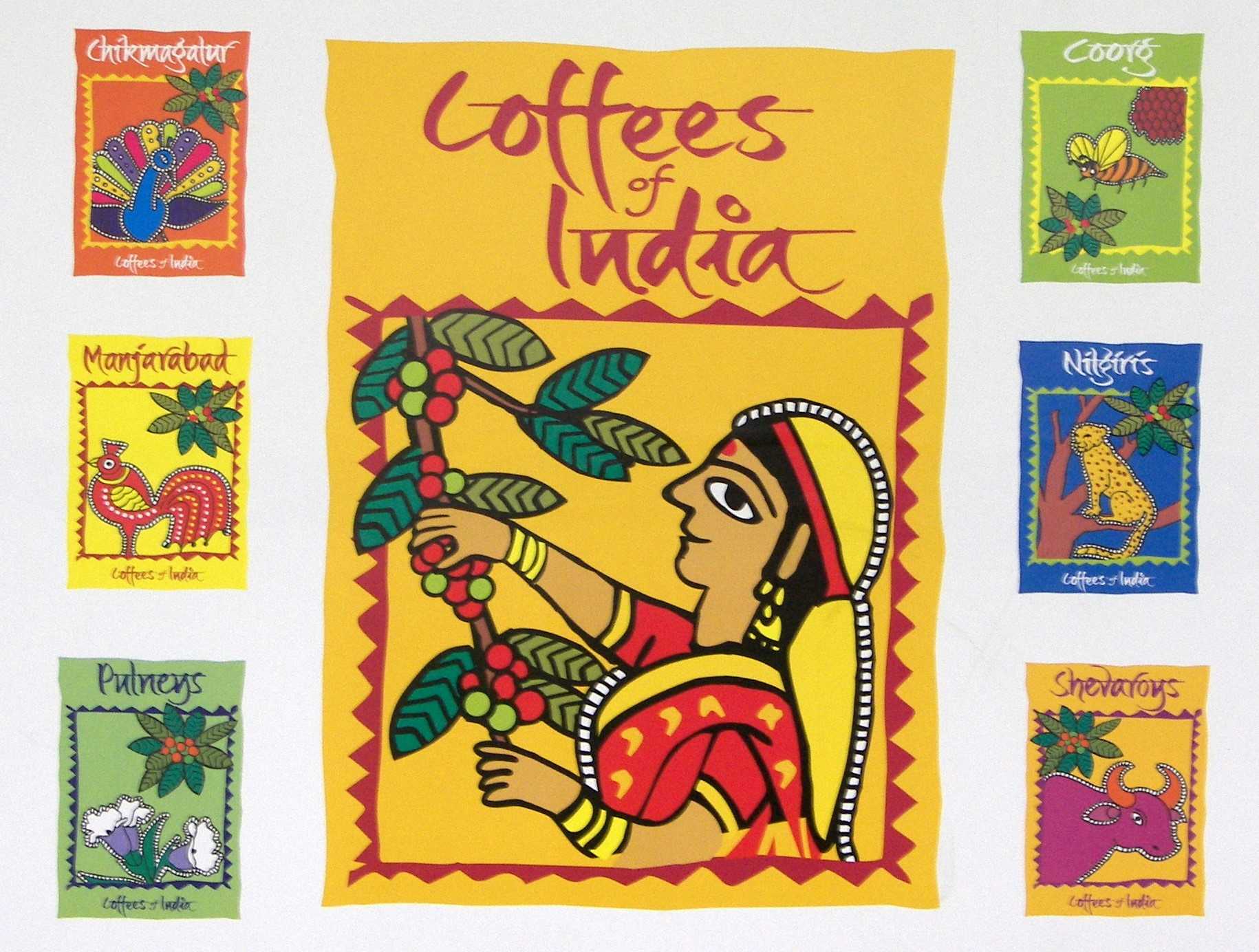After hitting a record 348,000 tonnes in 2015-16, India’s coffee production for the year starting October 2016 is set to drop by about eight percent. In its post Blossom crop forecast for the year 2016-17, the Coffee Board of India pegs production at 320,000 MT comprising of 100,000 MT of Arabica and 220,000 MT of Robusta.
This is an overall decrease of 28,000 MT (-8.05%) over the final estimate of previous year i.e., 2015-16 (348,000 MT).
The post-blossom estimate of Arabica for 2016-17 has shown a decrease of -3.38% (3,500 MT) over the corresponding final estimate of 2015-16, while the Robusta estimate has shown a decrease of -10.02% (24,500 MT) over the corresponding final estimate of 2015-16.
The drop in 2016-17 post blossom estimate has mainly come from Karnataka to the tune of 22,175 MT followed by 6,730 MT in Kerala.
The reduction in post-blossom estimate of 2016-17 could be mainly attributed to the delayed blossom and backing showers coupled with high temperatures especially in major coffee growing areas of Karnataka and to some extent in Kerala.
In most of the coffee areas of Karnataka, the estates with irrigation facilities have irrigated their Robusta blocks for one round of blossom during Feb-March and with one round of backing irrigation. But due to absence of subsequent natural showers, even the irrigated estates have suffered some setback due to prevailing high temperatures.
The first spell of summer (blossom) showers were received only during the month of April and these showers were scanty and isolated in nature.
These April showers did not cause any blossom in Arabica estates but resulted in scattered, uneven blossom in un-irrigated Robusta fields, which constitute about 40% of the Robusta area in Karnataka.
The hot and humid weather coupled with insufficient showers resulted in pinking and scorching of buds in Robusta.
The growers were unable to take up supplementary irrigations to top up the scanty showers due to drying up of most of water resources.
However, during the first fortnight of May 2016 most of the coffee areas have received wide spread rains which served as blossom showers for Arabica coffee and backing showers for Robusta estates.
Further, the showers received during second fortnight of May 2016 served as backing for Arabica and helped in good crop setting.

In Karnataka, the post monsoon estimate is placed at 253,340 MT with a break up of 82,460 MT of Arabica and 170,880 MT of Robusta.
This is an increase of 20,110 MT (8.62%) over 2014-15 final estimate of 233,230 MT comprising of 10.31% increase in Arabica (7,705 MT) and 7.83% in Robusta (12,405 MT).
Among the districts, Kodagu district recorded an increase of 15,585 MT (12.76%) over the final estimate of 2014-15 and this increase was contributed by both Arabica (3,055 MT or 16.94%) and robusta (12,530 MT or 12.04%).
Chikmagalur district recorded an increase of 4,730 MT (5.98%) over the final estimate of 2014-15 which was contributed by both Arabica (4,225 MT or 11.06%) and robusta (505 MT or 1.24%).
While Hassan district, unlike other two districts, showed a marginal decline of 205 MT (-0.64%) over the final estimate of 2014-15, wherein Arabica has shown an increase of 425 MT (2.29%) while robusta has shown decline of 630 MT (-4.66%).
Apart from adverse weather conditions, the 2016-17 is an off-year for coffee crop in the country as the previous year (2015-16) happened to be a bumper year with an all-time record highest crop.
Among the states, the 2016-17 post blossom estimates for the Karnataka state is placed at 229,345 MT comprising of 74,485 MT of Arabica and 154,860 MT of Robusta.
All the three districts recorded fall in production over the previous year’s (2015-16) final harvested crop estimate with Robusta recording a highest decrease of 18,010 MT (-10.42%) followed by a reduction of 4,165 MT (-5.30%) in Arabica production.
Among the districts, Kodagu recorded highest decrease of 15,865 MT (-11.55%) followed by 5,215 MT (6.36%) in Chikmagalur and 1,095 MT (3.40%) in Hassan districts.
In Kerala state, which is mainly a Robusta producer, the post blossom estimates for the year 2016-17 is placed at 62,440 MT, a decline of 6,790 MT(-9.81%) over the previous year’s final estimate of 69,230 MT.
In Tamil Nadu, the Post Blossom forecast for 2016-17 is placed at 17,560 MT which is a marginal increase of 265 MT (1.53%) as against the previous year’s final estimated crop of 17,295 MT.
In Non-Traditional areas of Andhra Pradesh and Orissa as well as in North Eastern Region, the post-blossom forecast is placed at 10,655 MT as against previous final estimate of 9,955 MT.
The higher forecast has come mainly from Andhra Pradesh due to increase in bearing area




















